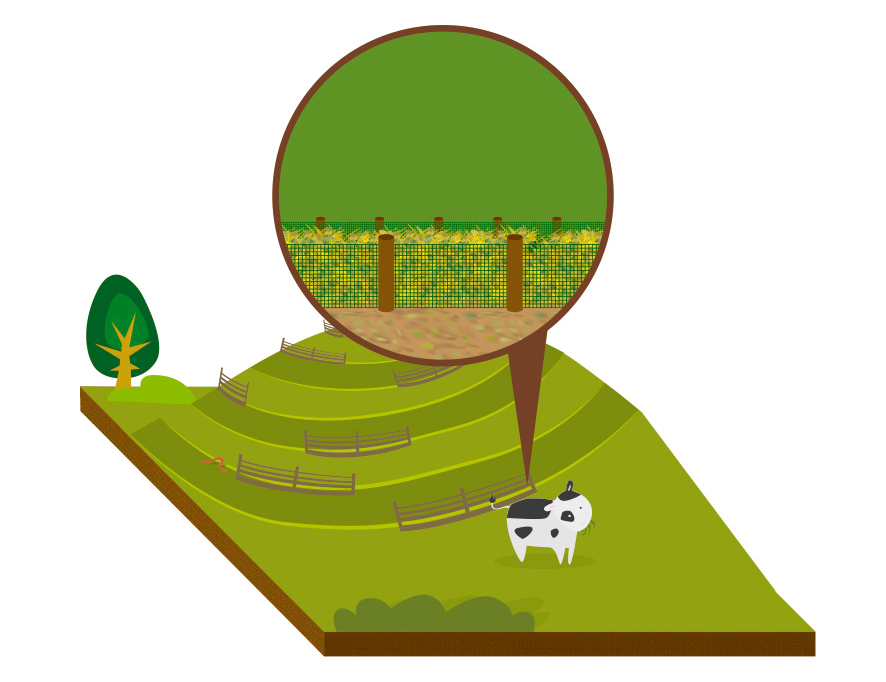8.- SI – Satisfaction Index
The implementation of this BMP could have a positive influence on the farmer’s perception.
17.- Arable land use efficiency
There will be a change in the use of the soil in the surface used for the buffers.
18.- Biodiversity surface area
Buffers could be a refuge for some species in which survival can be difficult in arable lands.
19.- Ratio between natural vegetation surface and total surface of the farm
Buffers will increase this ratio by making larger the natural vegetation surface (if this kind of vegetation is the one used in the buffer).
21.- Biodiversity structure (nests, hives, spider webs, etc.)- habitats
As buffers act as refuges, there will be an increase of biodiversity structures.
23.- NO3 level – rivers
In the case of having vegetative buffers settled down across the slope to reduce plot’s length, this will aim to retain runoff water, and will also catch and filter NO3 levels, avoiding it to reach water streams.
25.- GHG level
Plants acting as buffers are a sink for GHG.

